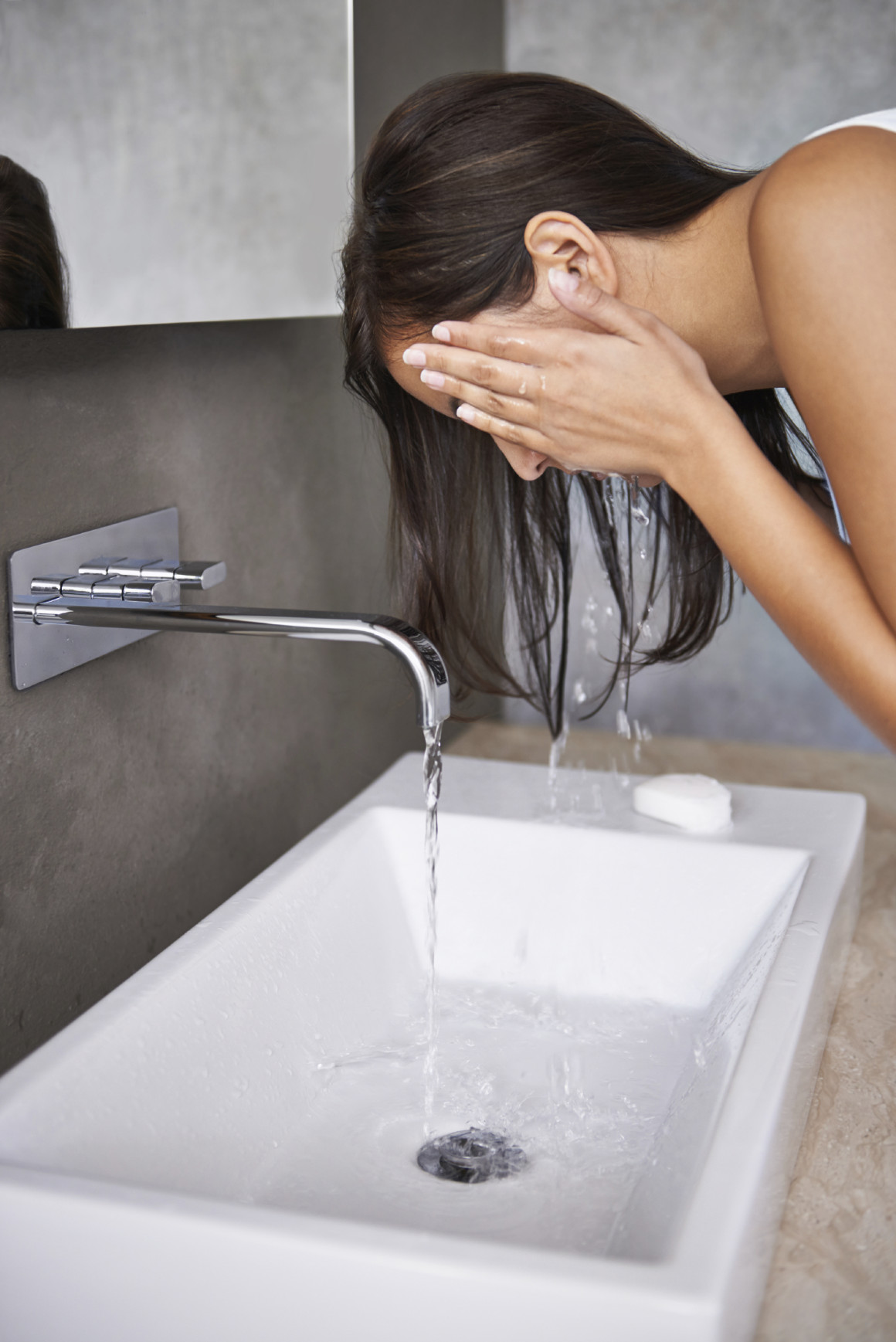In this fourth and final part of our household detox series (find parts 1-3 here), we’ll look at personal care products and our beauty routines.
Our skin is our largest organ, taking in anything we put on it, including cosmetics, facial scrubs, moisturizers, deodorants, and perfumes. In so doing, it is often the unwitting receiver of toxins and harmful chemicals. Thankfully, enhancing our beauty does not have to harm our health. Let’s explore.
Detox question: What ingredients are in your facial products and cosmetics?
Women are the target of some of the most fierce advertising campaigns out there, many of them touting special elixirs, serums, and other cosmetic products as the answer to all of our problems. But are these products good for us, or are they setting us up for illness and possibly even cancer?
Many common ingredients in our beauty products contain chemicals known to cause skin allergies, irritation, cancer, infertility, birth defects, reproductive problems, or learning disabilities. Some of the chemicals to avoid: parabens, DMDM hydantoin and urea, triclosan, benzoyl peroxide, DEA, MEA, TEA, FD&C color pigments, polyethylene glycol, phthalates, propylene glycol, sodium lauryl sulfate, and sodium laureth sulfate.
The cosmetics we use to enhance our beauty can also contain coal tar, formaldehyde, talc, and toluene, all of which can have negative effects on our health. Many natural and organic alternatives exist. Be sure to read the fine print and inspect the ingredients. Honeybee Gardens is one company making great strides in offering natural cosmetics such as mascara and lip gloss, while Butter London offers a 3-free (without dibutyl phthalate, formaldehyde, and toluene) nail lacquer. The Environmental Working Group’s Skin Deep shopping app is a great resource for researching specific brands and products while you shop—you can simply scan a product's barcode and see how it scores for safe ingredients.
With warmer summer weather upon us, many are concerned about the risks of sun exposure. Sunscreen can contain harmful chemicals such as oxybenzone, retinyl palmitate, and methylisothiazolinone. If you find yourself needing sunscreen, natural options that use zinc oxide as a main ingredient are safer and still effective. The Badger brand is one I’d recommend. For more on safer sunscreens, check out the Environmental Working Group’s Guide to Safer Sunscreens.
Detox question: How important is the use of deodorant to you?
Deodorant is a common product most of us use. As a culture, we’re terrified of stinking and spend millions of dollars on products meant to help us avoid it. Unfortunately, deodorants can contain harmful ingredients like aluminum, which some research suggests may be linked to breast cancer in women. Other common hazardous chemicals in deodorant include triclosan, phthalates, and propylene glycol.
Keep in mind that our bodies were made to sweat and release toxins; inhibiting this process is counterintuitive for our health. Sweating doesn’t mean we have to stink, either. If you happen to be one of the very stink-conscious folks out there, I invite you to examine your diet. Healthy skin, hair, and nails, as well as a pleasant-smelling body, are largely affected by what we eat and drink. Drinking plenty of water and a diet that is rich in vitamins, minerals, healthy fats, seasonal vegetables and fruits, greens, and antibiotic- and hormone-free pastured protein can move mountains in terms of our skin’s radiance, smell, and overall health. True beauty comes from within, after all.
During our detox, I stopped using deodorant altogether, and I don’t miss it. I feel good about letting my body do what it needs to in the way of removing toxins and sweating. From time to time the odor of garlic, curry or onions seeps from my armpits, but I take that as a sign that my lymph system is functioning healthily. For those of you who can’t stomach the idea of not using deodorant, there are natural alternatives (like the Natural Solution Himalayan Salt Deodorant Bar) at many grocery and health food stores, and antimicrobial coconut oil works well too (see easy recipe below).
Detox question: Where can you simplify?
During our own detox, I slowly began to replace all of my facial products and cosmetics, including nail polish, with plant-based products. I tossed all of my moisturizer, cleansers, and toner. I replaced my facial cleanser with warm water and a washcloth, followed by a few drops of jojoba oil serum as a facial moisturizer (see DIY recipe below). Jojoba oil is much like the natural sebum produced by our skin and moisturizes without being overly oily. If you find you need a facial cleanser with a little more oomph, there are several good natural brands out there, including Enkido Calming Milk Scrub and Conscious Skincare Gentle Face Wash. A good rule of thumb that I now abide by is if you can’t eat it, don’t put it on your skin.
Detox question: How will you dispose of the products you no longer need?
Please use caution when disposing of personal care products you no longer need. Products that contain triclosan or other harmful chemicals should not be thrown in the trash or be put down the drain, where they can end up in local lakes and rivers. Many cities and towns have resources to help dispose of unwanted products safely. Just Google hazardous waste collection sites or pollution prevention programs in your area.
It is a beautiful thing to take responsibility for one's health and for the health of the environment that we are dependent upon. I invite you to explore what works for you and your family, and to consider a household detox in the spirit of improved health and wellness. Cheers to you on your journey!
DIY Deodorant
You will need:
⅓ cup coconut oil
2 tbsp. baking soda
⅓ cup arrowroot powder
10-15 drops lavender essential oil
Cream together the coconut oil, baking soda, and arrowroot powder. Stir in the essential oil. Store in an airtight jar. Use your fingers to apply the mixture to your underarms. As with many natural, homemade products, use within 6 months for best results. You can also store the deodorant in the fridge to extend its shelf life.
Simple Jojoba Facial Serum
You will need:
1 bottle of jojoba oil
5 drops lavender oil
5 drops rose oil
Add the lavender oil and rose oil to the bottle of jojoba oil. Shake. Cleanse your face with warm water and a washcloth to slough off dead skin. Massage a few drops of the serum onto your face. Voilà!






